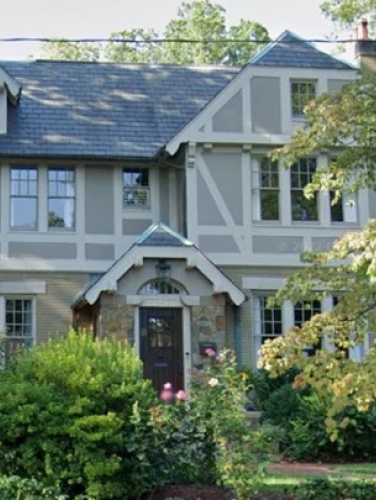
Bishop Edwin D Mouzon House
(ca. 1927)
Bishop Edwin D. Mouzon was one of the most influential Methodist clergymen of the early twentieth century.
800 Mt Vernon Ave, Charlotte, NC 28203
A native of Spartanburg, South Carolina, the widely known and respected Bishop Edwin DuBose Mouzon (1869-1937) first worked at the age of eleven in his father’s photography and artist studio. Years later, the bishop recalled that at the age of fifteen he “got religion” and was called to preach. He graduated from Spartanburg’s Wofford College in 1889. Mouzon’s first ministerial assignment for the Methodist Church was in the Texas conference, where he pastored churches in at least ten separate Texas communities before his 1908 appointment to a theology professorship at Southwestern University. Two years later, he was elected to the office of bishop and was consecrated in Asheville, North Carolina.
Property Quick Links
Bishop Mouzon served numerous important roles within the Methodist Church. He presided over most of the Church’s conferences in the United States, as well as those of Mexico and South America. He served as a delegate to the Church’s global ecumenical conferences in 1911, 1921, and 1931, and even established Brazil’s Methodist Church in 1930. As chairman of the Southern Commission to unite American Methodism, he aggressively but unsuccessfully campaigned for that goal. He was also influential in the establishment of Southern Methodist University.
During his first ministerial assignment, Bishop Mouzon met and, in 1890, married Mary Elizabeth Mike (1869-1917) of Bryan, Texas. The couple had five children before Mary passed away in 1917. The bishop remarried in 1919. He and his second wife Mary Pearl Langdon (1874-1947) moved to Charlotte in 1927 when the bishop was assigned the episcopacy of the Carolinas. In 1935, he was assigned the territory that included Virginia, West Virginia, Maryland, and the District of Columbia. At the time of his death in 1937, Bishop Mouzon was one of the country’s most prominent churchmen and the senior bishop of the Southern Methodist Church.
In 1926, Bishop Mouzon commissioned Charlotte native and architect Marvin W. Helms (1883-1960) to design his new home. Starting as an office boy, Helms learned architecture by apprenticeship and was licensed about 1916. For several years, he worked with the well-known Charlotte architect Charles Christian Hook (1870-1938). After Hook’s death in 1938, Helms practiced on his own until 1958, when he joined with his grandson, Marvin H. Saline, to form Helms and Saline. Bishop Mouzon made a logical choice of Helms as the architect for his Charlotte residence, as Helms had just completed the designs for the new Dilworth Methodist Church sanctuary. Over the years, Helms designed hundreds of rural Methodist churches in the area that were funded by the Duke Foundation. He was particularly adept at Gothic detail, and worked on the Baltimore Cathedral with Father McMichael, an architect and monk at Belmont Abbey. For the Mouzons, Helms designed an American Eclectic house in the Tudor style, a somewhat misleading characterization given that such designs more closely mimic late Medieval English prototypes and feature steeply pitched, front-facing gables and ornamental false half-timbering.
The Mouzons enjoyed their Dilworth house for ten years before the bishop’s death in 1937. Mrs. Mouzon sold the house in 1939 to Evelyn Wrenn, who owned it until 1950. The house has since changed hands several times over the years.

